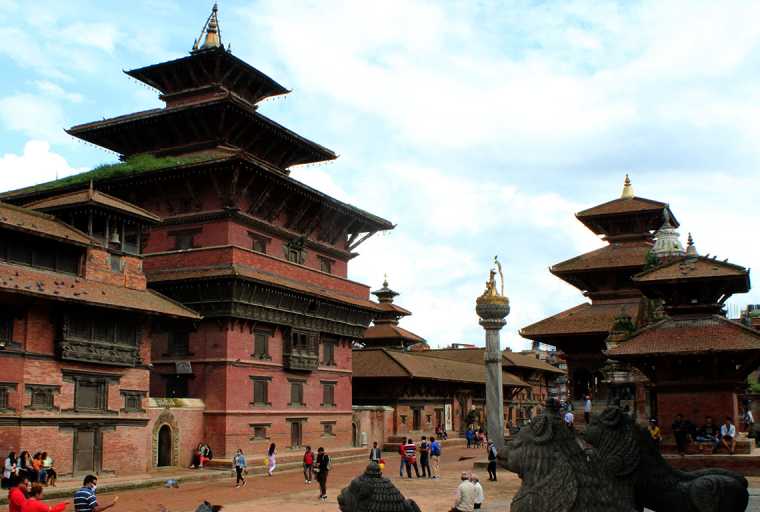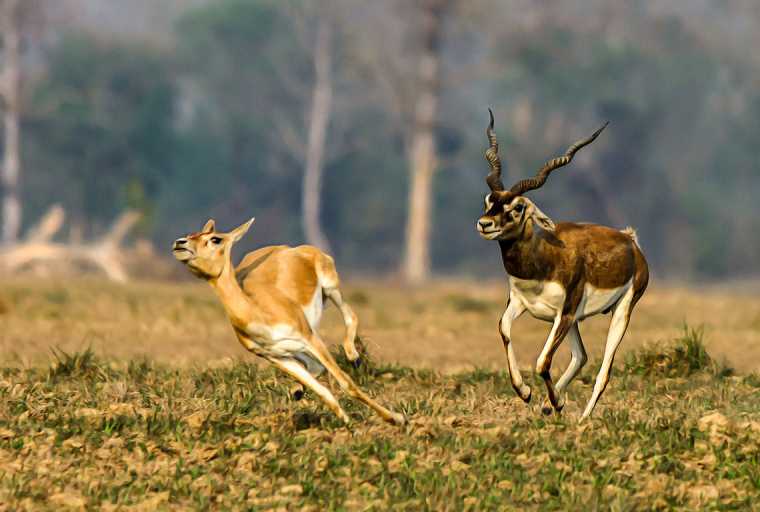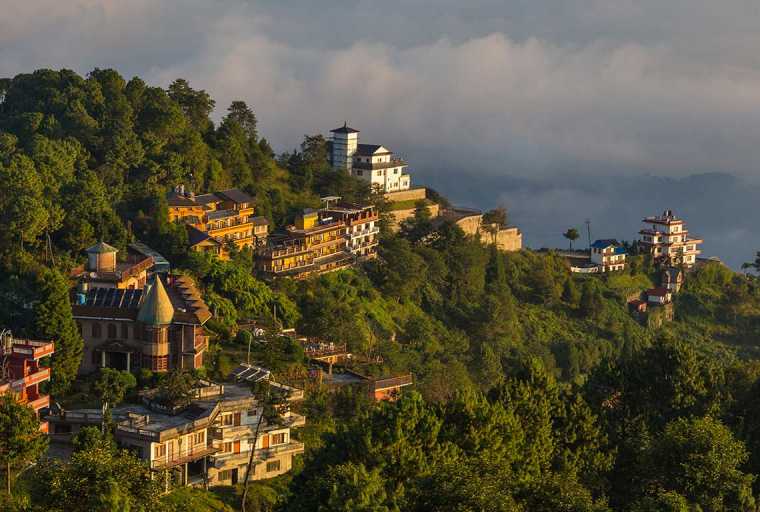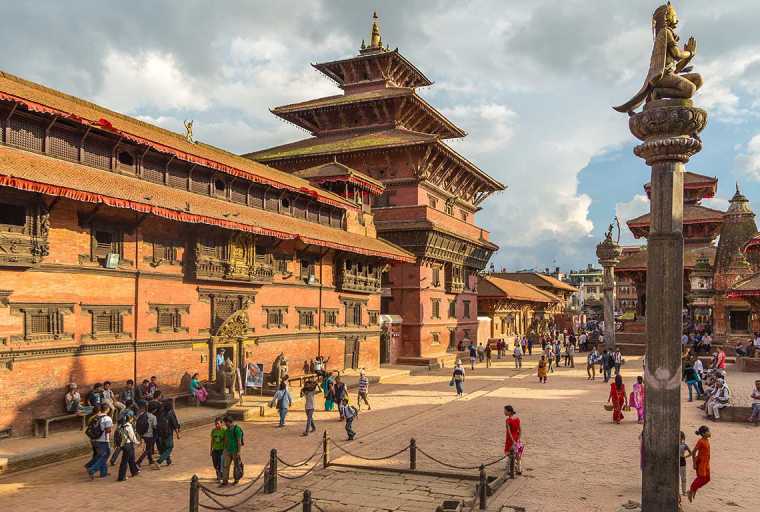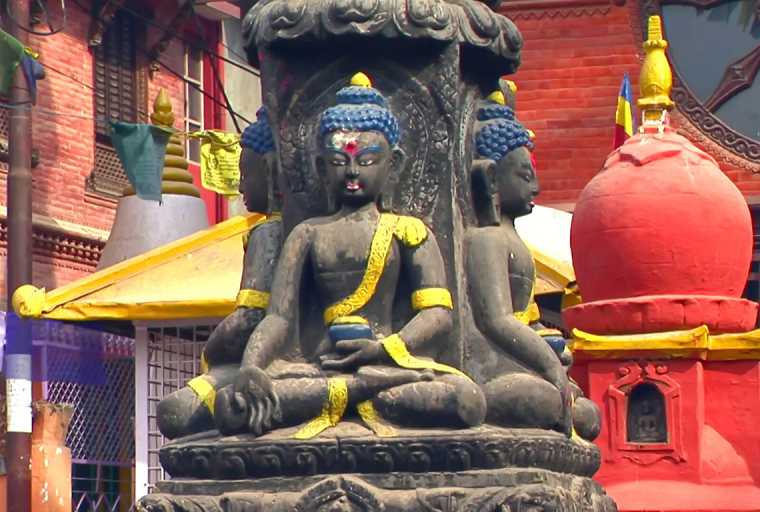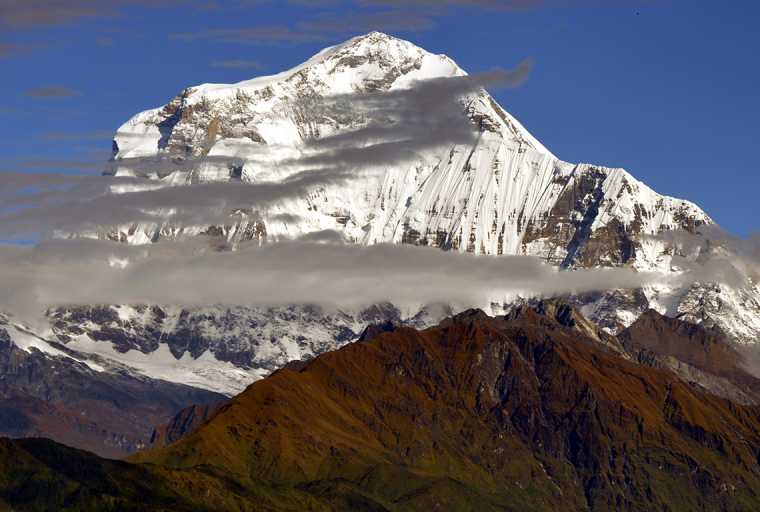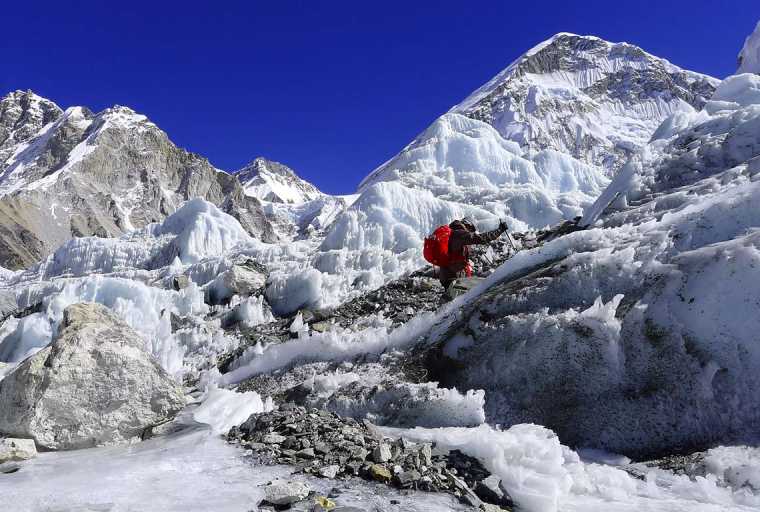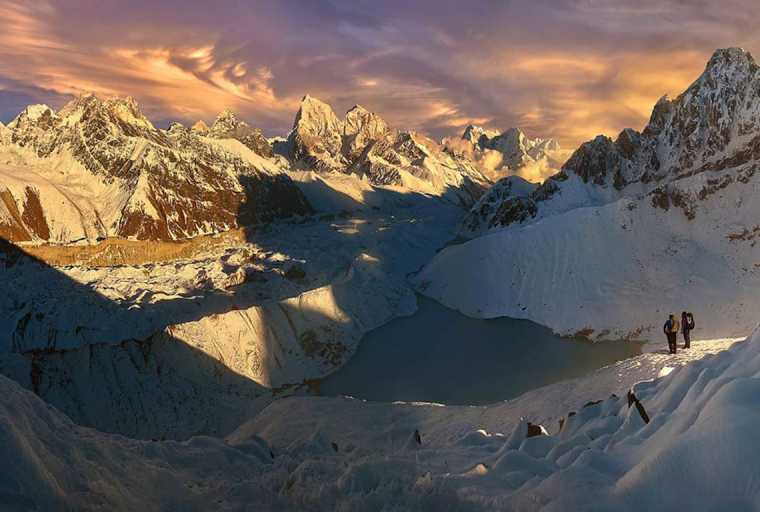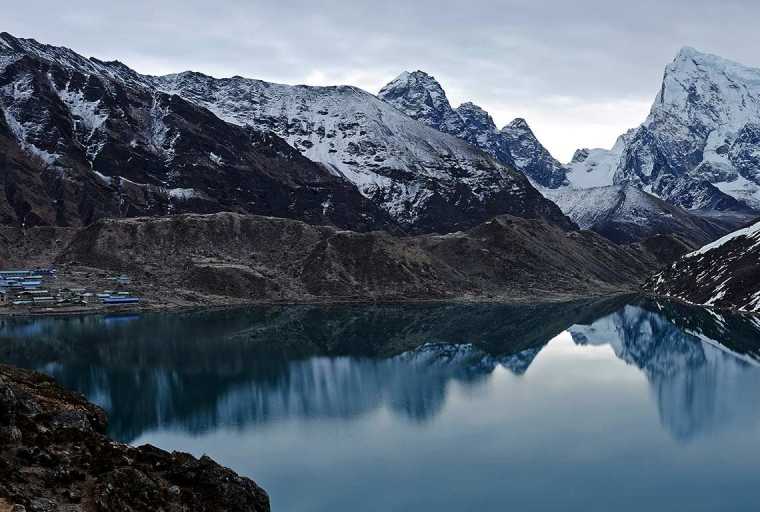Dashain Celebration in Nepal
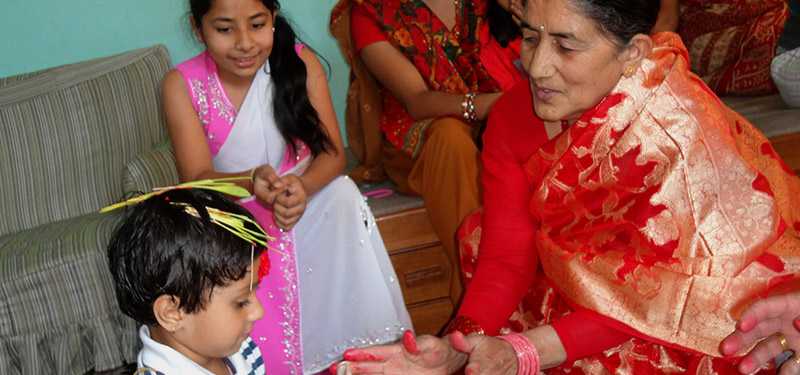
The season of fall brings a series of joyous festivals to Nepal. The culturally diversified and multiethnic nation, Nepal, is said to celebrate more festivals than days in a year. Most of these religious festivals are set by the lunar calendar and aren’t celebrated on a fixed date every year.
Vijaya Dashami, commonly known as Dashain or Bada Dashain is an auspicious occasion for the Nepalese people which lasts for 15 days but is especially celebrated during the last 7 days. It is the longest festival celebrated in Nepal which is awaited by people throughout the year to appear on the calendar. It appears during the month of Ashwin (late September/ early October) according to the Bikram Sambhat calendar. This festival is celebrated to offer our prayers to Goddess Durga, a powerful manifestation of Shakti (Devi), and also the consort of Lord Shiva.
Historical Mythology behind Celebration of Dashain
The festival of Dashain is celebrated to acknowledge the triumph of victory of good over evil spirit. According to Hindu legends, a demon named Mahishasura had spread horrors and terrors in Devaloka (God’s abode) and Prithiviloka (Earth) in his buffalo form after receiving the boon of immortality from Lord Shiva.
Goddess Durga fed up with the demon Mahishasura, fought him in a continuous war of 9 days between vice and virtue and finally defeated him on the 10th day. She carries the weapons of all gods since she was created from the energy of all of them together, especially the trinity of Brahma, Vishnu, and Shiva.
Also known as Mother Goddess, she is who resembles power, preservation, and valor, and is worshipped during Dashain with innumerable pujas, lavish offerings, and an immense amount of animal sacrificial rituals.
The first nine days, also known as Navratri, is worshipped to Goddess Durga for her ferrous battle with the demon Mahishasura, the tenth day for the slain of Mahishasura, and the last five days is celebrated for the victory with the blessing of Goddess Durga.
Likewise, there is also another Hindu mythology, that comes from the legend of Dushara, Dush meaning 10 heads of Ravana and Hara meaning defeat. Hence, Dushara is celebrated on the 10th day of Vijaya Dashami marking the defeat of Ravana by Lord Rama. It is believed that his victory was only possible after getting the blessing from Durga Devi. This celebration is especially observed in Srilanka, northern and western India, and is celebrated by burning a huge effigy of Ravana with 10 heads burnt using Dhanusha (bow and arrow).
Celebration
The festival of Dashain begins with Ghatasthapana following by Fulpati, Maha Ashtami, Navami, and Dashami.
Day 1: The day of Ghatasthapana, meaning sowing Jamara is the inauguration of Dashain in Nepal. On the day of Ghatasthapana, people sow seeds of barley and maize in a pot/sandbox. On the center of the sandbox is placed a Kalash filled with holy water and around it, the seeds are sown.
Traditionally, the male of the household waters the Kalash and worships it twice a day till Dashami. It is believed that Goddess Durga is present in the Kalash during Navratri. It is kept in a sacred place in a household (puja Ghar). It is kept in a dark place where the sunlight does not reach.
The outsiders or anyone except the family members cannot see the Jamara and Kalash until it is harvested. The Jamara (holy yellow grass) will be harvested later on from that sandbox to use in Dashami.
Day 7: Fulpati means flower, plants, and leaves. On this day, a Brahmin priest brings royal Kalash, Jamara, banana stalk, and sugar cane tied up with red clothes from the district of Gorkha to Kathmandu. A parade is organized by the army of Nepal on this auspicious day in front of the president of Nepal in the Tudikhel ground. Also, in a common household, people tend to collect and offer 9 different types of flowers to Goddess Durga on this day. They start to clean and decorate their home from this day for forthcoming ‘Tika Day’.
Day 8: The eighth day is known as Maha Ashtami. Kali, the manifestation of Goddess Durga is worshipped with high dedication in Maha Ashtami with animal offerings in-home or different temples of Nepal such as Maitidevi Temple, Hanuman Dhoka, Bhimsen Temple, Bhairav Temple, Manakamana Temple, and many more.
The blood of the animals is offered to Goddess Kali symbolizing fertility. The meats of those animals will be later consumed by the people as a Prasad, food blessed by divinity. Apart from animal sacrifice, people especially vegetarian families offer Kupindo (Ash Gourd) to Kali. The night of the eighth day is called the ‘Kal Ratri’.
On this day, weapons are also worshipped along with Goddess Durga. The Newar ethnicity especially values this day, they call it Khadga Puja and worship all of their weapons.
Day 9: The ninth day of Dashain is known as Maha Navami. It is the last day of Navratri. The sacrificial rituals continue to this day. On this day, official military ritual sacrifices are held in the courtyard of one of the Hanuman Dhoka Palaces. The animals are sacrificed along with gunfire salute.
It is celebrated with the worship of Durga and Vishvakarma along with your machinery possessions like tools, vehicles, and agricultural equipment. Worshiping vehicles and other machinery tools on this day is done to thank Lord Vishvakarman, the god of creation for providing us with all these goods to make life easier. It is also believed that worshiping these goods will prevent accidents for another year. The temple of Taleju Bhagwati located near Basantapur Durbar Square, which is restricted for the public on normal days, is also open for visitors and pilgrims.
Day 10: On the tenth and most important day, Vijaya Dashami is celebrated to honor the victory of Goddess Durga over Mahishasura. On this day, we receive tika (made with red/white vermilion, rice, and yogurt) and Jamara from elders as well as their blessings in form of Dakshina (money or gifts). People get to meet their loved ones as they visit the home of many elder relatives to receive tika and Jamara on their foreheads. Family and relatives exchange gifts and greeting with each other while feasting on delicious cuisines. During the nighttime, you can get a chance to observe classical dances with masked dancers, parades, and pujas.
Day 15: The last day of Dashain is a full moon night called Kojagrat Purnima. Kojagrat literally translates to ‘the one who is awake’ and Purnima means Full Moon. On this day, people stay awake the whole night in expectation for the Goddess Laxmi to visit the earth and bless them with wealth, long life, good health, and prosperity.
Additional Activities during Celebration
Nepalese people are often seen buying new clothes, flying kites, and playing cards, swings, and Ferris wheels during Dashain.
Buying new clothes:
Shopping for new clothes has been a tradition in Dashain. The people of the rural area specially the ones who are financially backward mostly only buy new clothes during the time of Dashain. The shops will offer sales/discounts during this period which attracts a massive crowd in clothing stores.
Flying Kites:
Flying the kites actually symbolizes stopping the rain in mythology. However, the kids and teenagers fly kites during Dashain for fun and compete with each other to achieve the most ‘Changa Chet’, which is Nepali slang that means receiving victory by cutting other competitors’ kites.
Playing Cards:
The tradition of playing cards in Dashain is to sit together with your family and have a good time. People also bet the money from their Dakshina to play cards.
Playing Swings & Ferris Wheel:
Many people stall a swing from bamboo and ropes in near-empty land. People gather together to play with swings. The mythology of playing swing is to leave the ground at least once a year, to relish the freedom, and to make your path to heaven. Also, a few small Mela (fair) are organized during Dashain and you can ride Ferris wheel there.
All the Nepalese people around the globe celebrate the festival of Dashain with their loved ones. Most people living abroad arrive in Nepal during the season of Dashain to receive Tika and Jamara from their elders and spend some quality time with their friends and family. This festival is not only significant religiously but also plays an important part to reunite parted families who have migrated to different parts of the world in search of more opportunities, studies, and better quality of life.
Although Dasahain in different variations is celebrated by all the Hindus residing all over the world, a similar celebration like Nepal has been celebrated by the North-eastern states of India, Lhotshampa of Bhutan, and Burmese Gurkhas of Myanmar for hundreds of years. Likewise, Hindus, Buddhists, as well as Kirant community celebrate Dashain in Nepal. The Newar community refers to it as ‘Mohani’ and also as one of the most significant festivals.
Dashain brings a package of elaborated pujas and worships, family reunions, yummy food, blessings from elders, and a hustle-free environment with itself. Dashain is a great time to visit Nepal as you will be able to experience the different cultures and traditions of Nepal along with the madness in people while celebrating festivals. The climate of this festive season is also perfect to indulge in adventures such as trekking, hiking, etc.

